The Argentine, Pac Man or Ornate Horned Frog (Ceratophrys ornata) may be the world’s most popular amphibian pet. Beautiful and “charmingly” pugnacious, Horned Frogs require relatively little space despite their “salad bowl” size, and may live to age 20 or more. In a close second among frog fans is the massive African Bullfrog, Pyxicephalus adspersus. These brutes, which can live past age 50, are resilient beyond belief – one was observed downing 17 hatchling spitting cobras, and during droughts they can remain dormant for 10 to 12 months!
In the following article I’ll compare Horned and African Bullfrogs in terms of their habits, activity levels, and care needs, so that you’ll be able to choose the species that best suits your interests and frog-keeping skills. Detailed care information is provided in the articles linked under “Further Reading”; as always, please also post any questions or observations you may have.
Handling Your Pet Frog
Both Horned and African Bullfrogs have powerful jaws equipped with bits of bone that extend up from the jaw. These “teeth”, technically known as odontoid structures, can inflict serious wounds. Even after years in captivity, an instinctive feeding response will cause frogs to bite fingers moved within range.
Fortunately, it is a simple matter to safely pick up either by grasping it behind the front legs. However, they should be handled only when necessary, and then with wet hands, so that you do not remove the protective mucus from their skin. Wash well after handling any animal.
Activity Levels
Neither is overly active, but each has fascinating behaviors (please see articles linked below). Both will feed by day, but may become more active after dark. In order to observe them at night, you can equip the terrarium with a black or red reptile night bulb (frogs do not sense the light produced by these bulbs).
Life Span
The published longevity for an Ornate Horned Frog is just short of 15 years, but there are unofficial reports of individuals approaching age 23. African Bullfrogs are among the longest-lived of all amphibians, with a 51-year-old individual holding the record.
Breeding Potential
Both are bred by commercial dealers, but reproduction is not common in home terrariums. However, given suitable space and proper pre-conditioning, either species may surprise you with thousands of eggs…and the tadpoles are as rabidly carnivorous as their parents!
Cost
The cost of ownership of each frog is about the same. Neither requires UVB exposure, and they do fine with similar diets, terrariums and heat levels.
Terrarium Size (single adult)
African Bullfrogs and Horned Frogs are “sit and wait” predators, and as such are relatively inactive. A 20 gallon aquarium (or a similarly-sized plastic tub) will accommodate an average adult, but a 30 gallon tank will be “appreciated”. Males, the smaller sex, have been successfully kept in 15 gallon aquariums.
Light and Heat
Neither frog requires exposure to UVB light.
Both African Bull and Horned Frogs fare best at temperatures ranging from 72 F on the cooler side of the terrarium to 85 F at the warmer. Reptile heat pads are ideal as heat sources, but are best located along the sides of the terrarium. When placed below the tank, there is a chance that your frog may burrow down and come in direct contact with overly-hot glass. Incandescent bulbs, night bulbs, or ceramic heaters may also be employed, but beware of their drying effects.
Frog Diet
The dietary requirements of the two species are identical.
Both require a great deal of calcium, especially as they are growing. Whole fishes and, to a lesser extent, pink mice, are ideal calcium sources. Pink mice may be offered once each 7-10 days, or omitted if fish are consumed regularly.
Crickets alone will not supply adequate nutrition. Minnows, shiners, earthworms, roaches, and crickets can make up the bulk of their diet. Crayfishes, butterworms, silkworms and other invertebrates should also be included regularly.
Food (other than pinkies and fish) should be powdered with Zoo Med ReptiCalcium plus D3 or a similar product. Vitamin/mineral supplements such as ReptiVite should be used 2-3 times weekly.
Health Concerns (Pet and Pet Owner)
African Bullfrogs and Horned Frogs are equally at risk from the following health issues. If proper care and diet is provided, both will prove to be extremely hardy and long-lived.
Ammonia toxicity is the most frequent cause of death. Ammonia is released with waste products and is rapidly absorbed via the skin as frogs soak in water or rest on the substrate. Ammonia can prove fatal in short order, so be sure to have someone clean the terrarium frequently when you are away from home for extended periods. Generally, water should be changed daily, and always treated with a chlorine/chloramine remover. Unclean conditions can also result in a bacterial skin infection known as Septicemia or “Red Leg”.
Intestinal impactions resulting from substrate ingestion are sometimes encountered (both species). This problem can be avoided by the use of cage liners, or by feeding your frogs in large bowls, via tongs, or in a bare-bottomed enclosure.
Calcium deficiencies and other diseases related to poor nutrition are common among frogs maintained on crickets and mealworms alone. Please post below for further information.
Salmonella bacteria, commonly present in reptile and amphibian digestive tracts, can cause severe illnesses in people. Handling an animal will not cause an infection, as the bacteria must be ingested. Salmonella infections are easy to avoid via the use of proper hygiene. Please speak with your family doctor concerning details, and feel free to post below if you would like links to useful resources.
Further Reading
 That Reptile Blog – Reptile, Amphibian and Exotic Pet Care and Information
That Reptile Blog – Reptile, Amphibian and Exotic Pet Care and Information

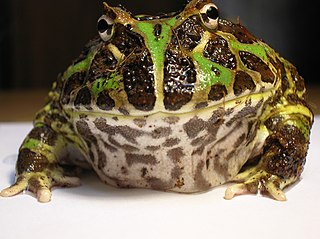
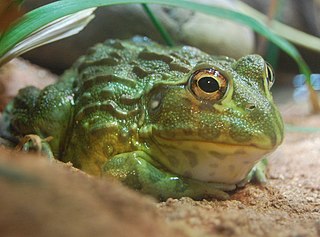
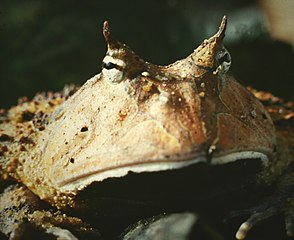
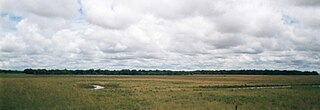


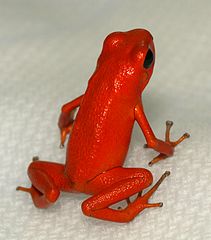
When it comes to ammonia toxicity, would having cleaner insects like springtails or isopods make a difference, or should you be changing out the substrate monthly?
Hello Nick,
Springtails and similar inverts can be useful in large planted terrariums that are lightly stocked with small animals, but they will not make a difference here..in any event, much of the ammonia is excreted in liquid form, and not consumed by these creatures.
Cleaning schedule depends on many factors…most frogs tend to defecate in water, which helps, but always bet to err on the side of caution. Best, Frank
Hello Frank,
I may soon be coming into possession of a Pacman frog or two(cranwelli). It seems that many people keep them with a heat pad in the 80s or at least high 70s temperature wise. However, their range seems to extend into the southern cone of South America so wouldn’t they be subjected to cooler temperatures in the wintertime? I am pretty sure I read somewhere that in their natural habitat they undergo an estivation period in the winter. Would there be any harm in maintaining the frogs at room temperature(which for now would be in the 60s or at the most low 70s)? In the spring and summer the room temperature would be in the 70s to high 80s. Please let me know. Thanks!
Hello Malik,
They can take the temps you mention for the winter, but it is a bit risky…immune system may be suppressed, which can lead to trouble if there are underlying health concerns. they will not feed, and need to be completely empty of food for 10 days or so before chilling. Generally safer to keep on the low end of the active scale in winter – 75-78 F by day, high 60’s by night, or at usual (warmer) temps. best, Frank
Hi Frank,
Today I bought a small C. cranwelli frog aprox 3-4 cm. It was in a terrarium with soil and moss before, and now it is in the small container they gave to me, and as it is not small proportional to its size, I have him temporarily there until it grows a little. For substrate it has the wet paper towels they put in the store. My problem is he is not eating. I had the impression that such frogs are very simple and can eat everywhere, even stay in the open without getting stressed, but my frog is usually in a corner and if I disturb it it makes some small jumps and tries to escape from the plastic of some corner. Is it true that they can live relatively exposed on paper without problems? I have made a hiding place with folded paper, but I don’t know when it will adjust. Is white a problem? Also, where should I put the container? Currently it is on top of my bearded dragon enclosure on the cool side, nearly exposed to light everywhere, but having the option to hide. Human traffic is minimal. I had the impression they don’t stress. What should I do? I am worried.
Hi,
Small ones are very wary at first – on the menus of a huge array of predators. As they adjust, most do hine w/o hides…just some moss to partially burrow into; but for now, provide a cave, and consider sphagnum moss if it still seems stressed. Light entering from several sides will be stressful to most…exposed feeling, etc. Dim to dark area preferable. Using a larger enclosure is also a good idea..more space always better, and this lessens ammonia toxicity concerns. Don’t worry about feeding, let it settle in …live food in small enclosure with inadequate shelter will invoke escape response. let me know if you need more info, Frank
thank you for the help. I may change the substrate, but first I wanted to observe it if it eats and defecates, so I kept the paper. I will cover the sides of the enclosure with paper as well, and I will put a dead leaf for hiding. What other thing can I do?
My pleasure; leave it alone as much as possible, no handling etc and it should settle in …enjoy and let me know if you need anything, frank
Hi Frank,
I removed the frog the next day and put it in a slightly larger container, stil with paper towel substrate, a large dead leaf of ficus for hiding, and the two sides blocked with papers. The one side was near my bearded dragon’s lamp to make a temperature gradient, but the frog didn’t like the heat. Perhapse their thermoregulatory needs are overstated. I was too anxious about feeding, so I force-fed it some earthworm peices the next day. It defecated three days later. Then I was throwing red runner roaches in the container, some went missing, so it probably ate them. I was replacing the paper daily, but soon I changed the substrate to peat with some clumps of moss on it, and no hide. The frog burrowed into the substrate. The same day I asist -fed it two red runners and a waxworm. It opened the mouth, took the end of the insect and swallowed it alone. Thus it wanted to eat most probably, but for a reason wasn’t eating of its own. Later for one day it wasn’t seen. Then it surfaced, and ate two red runners alone. I was feeding it every two days usually, and three days before it ate 4 superworms and 4 dubia roaches. The next day it ate another superworm but it could have eaten some more, as some I put in the tank have disappeared in the soil. Now I have the opposite problem than before. The frog is distended with food, and it doesn’t go away. I know they are physiologically supposed to be adapted to overeating, but why they don’t digest and go away? How long should I wait? Now it eats nothing. Its behaivior isnormal – it is usually completely or nearly completely buried in the day, coming out at night. When it wanted food, it was usually in the middle of the tank, near its hole, otherwise it is most of the time nearer the hole. Sometimes I find it near a corner.
Hello,
The swelling can be from a bacterial infection (gas) , swallowing substrate or over-feeding. It is common for them to go off feed at certain times – may be linked to circadian rhythms, temperature changes etc. Could also be stress related – they should not be handled except when necessary, and never force fed unless under advice of a vet – they will not starve, can adjust metabolism to suit food availability within reason. Supermealworms should be used sparingly, newly-molted grubs best if they are used. Leave the frog alone for a few days…if swelling remains, would be best to have it checked by a vet, let me know if you need help locating an experienced vet, best frank
I am not handling the frog now that it has adjusted. The swelling is from the food clearly, as items can be easily palpated and fill the belly. Another day has past and nothing changed. And its size is just around 5 cm. When should I feed again? Also it has grown a bit from when I bought it. Hibernation is very improbable in such weather and with a full stomach.
Hello,
Unfortunately it’s impossible, even for an experienced vet, to distinguish food from an impaction, tumor, growth, etc via palpation; Hibernation or aestivation can be controlled by circadian rhythms, and would not be related to feeding behavior, at least in captives. Again, best not to handle animal other than for a vet visit and no need to think about feeding at this point. A vet visit would be your best option, I hope all goes well, frank.
Yesterday it defecated and I removed that peice of substrate. It seemed less plump then. Now it has changed hiding spot and buried completely itself. Probably the vet will not be able to operate on such a small animal, it is so small that a bearded dragon can eat it! But probably it is well.
Let me know if you need info on other substrates; there are many options for vet treatment, including surgery if needed, but an amphibian-experienced vet would need be consulted. let me know if you need a reference in the future, frank
I meant a handful of substrate. The substrate is peat with some clumps of sphagnum moss on top.
Also I have another question. Are stink bugs safe for reptiles and amphibians? They are plentiful here, and currently I just caught one and I am searching on the internet if it is safe to feed. I mean those small, stinky hemipteran insects that fly everywhere. And if it is safe, which species is more likely to accept it? Crested gecko, bearded dragon, or pac man frog?
To avoid substrate ingestion you can try feeding via tongs or removing the animal to a bare-bottomed container for feeding; or you can use a terrarium liner rather than peat, and provide a cave/cork bark slab as shelter.
Stinkbugs are rejected by almost all herps; I’m not sure if the gas produced would be toxic if swallowed, as most animals spit them right away. best, frank
I had it in paper towels before, but they needed frequent changing. In a peat and or soil substrate amonia diffuses, so I have less of a fear of toxicity. Also it is hiding more naturally, and with this setup I rarely intervene. The improvement I can do is to replace the peat with a peat and soil mixture, and reduce the moss. My frog is smallish for moving it in a separate feeding container or having it exposed. Today it ate a freshly molted mealworm.
Ammonia in soil , moss or paper/liner will have the same effect, whatever way makes it easier for you to replace/clean substrate should be used. Peat, soil, coconut husk are commonly associated with impactions in frogs…sometimes works out, but risky unless animal is fed as mentioned earlier. They adjust well to caves, area below plastic plants etc. When kept hungry for a time, I’ve not known any to refuse food when moved, although young animals will take longer to adjust than adults.